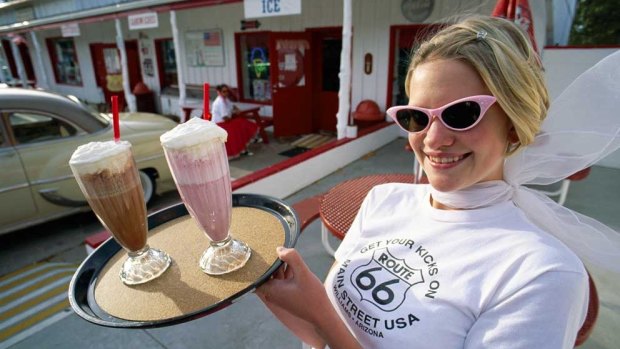This was published 6 years ago
Rules of tipping in the USA: Think it's confusing? It just got worse
By David Whitley

Including the service within the menu prices, and paying staff properly, is becoming a micro-trend.Credit: Alamy
Tipping in the US, as anyone who has been already knows, is a patience-stretching, completely unnecessary minefield. But even those of us who have reduced it down to "add 15 per cent in bars, restaurants and taxis, then don't worry about the rest" will find America's new wave of tipping complications a nuisance.
The wealth and wellness charge
In Portland, anyone deciding to eat at Clyde Common (clydecommon.com) may be surprised to see a small line on the menu about their ingenious new charge. It reads: "A 3 per cent health and wellness charge will be added to each check to provide health insurance for our staff."
This, in theory, is to cover the healthcare costs of employees – although there are precisely zero acceptable excuses for adding this as a surcharge rather than factoring it into the price of the dishes.
Alas, Clyde Common is not alone – a quick search of the internet shows similar charges elsewhere in the US too. It's very much a minority thing for now, but expect it to spread as petty-natured restaurant owners decide they want to score points about healthcare provision.
But what to do if you encounter it? If it's clearly stated, then reluctantly pay it – but the best course of action upon seeing it clearly stated is to simply eat elsewhere.
Tip-free restaurants
As one small minority of restaurants adds spurious charges, another brave handful is removing tipping altogether. Including the service within the menu prices, and paying staff properly, is becoming a micro-trend, with New York restaurant mogul Danny Meyer at the forefront. He introduced a "hospitality included" premise at the Modern (themodernnyc.com) last year, and is rolling it out to his other 12 restaurants. He's not the only one – similar attempts are being tried elsewhere in the country, although generally at high-end restaurants.
Others, alas, have tried and failed – with either customers put off by higher up-front pricing or staff leaving because they didn't earn as much once the tips dried up.
Automated gratuities
Other restaurants are doing away with tipping, but using the staggeringly obnoxious method of adding surcharges to the bill to cover service, and at a rate that is higher than most people would pay otherwise. The Walrus and the Carpenter (thewalrusbar.com) in Seattle decided to slap diners with a mandatory 20 per cent service charge – others elsewhere do similar.
Elsewhere, little lines on the menu saying that 18 per cent service charges will be added for groups of six or more are commonplace. But in some restaurants, service charges are added with no prior notification. These restaurants are likely to be found in Florida, Hawaii and Las Vegas, or other destinations with high ratios of tourists from Europe, Asia and the US. And, more than likely, it's not something applied to the bill for all – just those considered by the waiter or waitress to be a potential bad tipper (ie. foreigners). Challenging the charge in Key West, I was told that it was a thoughtful "service for our overseas guests".
Dealing with it by calling over the manager and asking whether they think it'd be acceptable to do this for gay, or black, or Jewish guests is one approach. A slightly more diplomatic one is to ask for it to be removed so you can choose your own percentage.
These discretionary "auto-grats" haven't yet been ruled legal or illegal by any US court, although it surely won't be too long before it gets tested.
Suggested percentages
Now that most things are paid for by card, many businesses have taken to adding suggested percentages to the machines that take the payment. Usually this will tell you how much a 15 per cent, 18 per cent or 20 per cent tip would be. But others realise that most people will go for the middle option, and make it 20 per cent, 25 per cent or 30 per cent, not even giving a 15 per cent option. New York taxis are the most notable culprits for this. It's wise not to trust these machines' sums too much either – some will calculate the percentage amount on the price including the tax when it's customary to exclude tax in the calculation.
Uber tipping
There are many reasons why Uber is often better than a traditional taxi – ease of use, relatively low price, being able to see how far away the Uber is, drivers who follow GPS directions and maps rather than continually asking for guidance – but not having to tip while using them is a major plus point.
But despite having service included in the fare model being wonderfully sane, this is the US – and class action lawsuits have been launched by Uber drivers in Massachusetts and California. As a result, they've won the right to display signs saying that tips are "appreciated".
Uber policy still states tips are not required, but how long it takes before non-tipping passengers start getting marked down remains to be seen.
See also: 20 things that will shock first-time visitors to the US
See also: Who you need to tip in the US, and how much
See also: A complete guide to tipping in the US
Sign up for the Traveller Deals newsletter
Get exclusive travel deals delivered straight to your inbox. Sign up now.